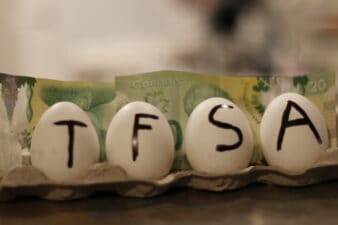The Tax-Free Savings Account (TFSA) has been around for over a decade now, steadily growing in value. If you’ve never invested in a TFSA but have been eligible every year, you could put away up to $69,500 into the account. And what investors love about the TFSA is that the income they earn inside the account is not taxable — most of the time. There are, of course, exceptions to the rule. Below are three ways where the Canada Revenue Agency (CRA) can impose taxes and/or fees on your earnings within a TFSA.
If you’re carrying on a business
The TFSA is for investment purposes, not for day-trading or any regular activities that would reflect that of an ongoing business. There have been cases in the past where people who traded too frequently landed in hot water with the CRA. If the agency thinks you’re carrying on a business inside of a TFSA, those activities are fully taxable in the eyes of the government.
What makes things worse is there are no definitive rules that you can look to and say if you hold an investment for a certain period that you’re safe; the CRA takes these issues on a case-by-case basis.
Overcontributing
Unlike trading too often, you can easily prevent overcontributing to your TFSA. If you contribute too much to your TFSA, you’ll get taxed on that excess. It sounds like it should be easy to avoid overcontributing, but it’s also easy to make mistakes. If you have multiple TFSAs with different brokerages, you need to track your contributions at all of them. If you contribute U.S. dollars, you’ll need to look for the Canadian dollar equivalent to know how much is left of your available contribution room. If you make withdrawals from a TFSA, that contribution room doesn’t replenish until the next calendar year, and re-contributing too early could also make you go over the limit.
Holding ineligible investments
If a stock trades on a major exchange like the TSX, NASDAQ, or NYSE, you can hold it in your TFSA. But if you’re going out on the fringes to find stocks that only trade over the counter and aren’t on any major European or North American exchange, that too could expose you to some unexpected fees. While the CRA permits stocks from many exchanges around the globe, you’ll want to quickly have a look at the designated exchanges to ensure you’re not adding something to your TFSA that isn’t permitted.
Why you should still use a TFSA
A TFSA can be a great tool for growing your portfolio and generating wealth, but you also need to be aware of the risks. These rules shouldn’t discourage you from using a TFSA.
Investing in a top bank stock like Canadian Imperial Bank of Commerce (TSX:CM)(NYSE:CM) can be a great source of recurring income and growth for your portfolio. Today, the bank stock pays a dividend that yields 5.3% annually. On a $10,000 investment, that’s about $530 every year you’ll be collecting from CIBC in dividend income. And inside of your TFSA, that’s money that’s not taxable. What makes CIBC an ideal stock to just buy and hold in your TFSA is that it also raises its dividend payments on a regular basis.
Today, the Big Five bank pays a quarterly dividend of $1.46. But five years ago, it was paying only $1.15. CIBC’s raised its dividend payments by 27% during that time, averaging a compounded annual growth rate of 4.9%. If the bank were to continue increasing its dividends at that rate, then after 15 years, you’d be earning twice the dividend income that you are today.







